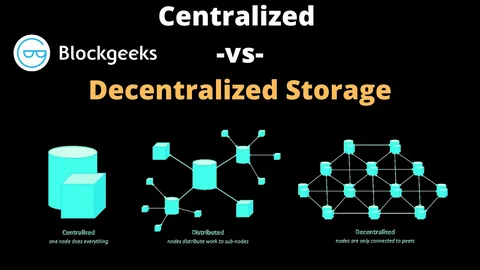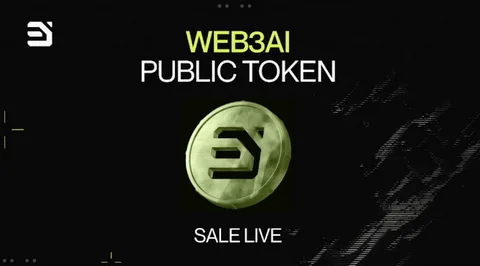Introduction
In the ever-evolving landscape of blockchain technology, decentralized storage protocols have emerged as a critical component of Web3’s infrastructure. These protocols aim to offer more efficient, secure, and censorship-resistant alternatives to traditional data storage solutions.
The Launch of the Walrus Public Testnet marks a significant milestone in this journey. Walrus, a Revolutionary Decentralized Storage Protocol, promises to reshape how data is stored, managed, and accessed on the blockchain. This blog post delves into xploring Walrus and why its Public Testnet is capturing the attention of the Web3 community.
We’ll cover the fundamentals of decentralized storage, how Walrus differentiates itself from other projects, the importance of the Testnet Launch, and what the future holds for decentralized data storage. By the end, you’ll understand why this Revolutionary Protocol is poised to make a lasting impact.

The Rise of Decentralized Storage
What is Decentralized Storage?
Decentralized storage refers to systems that distribute data across multiple nodes, removing central control points. Unlike traditional cloud storage providers (like Google Cloud or Amazon S3), decentralized solutions use blockchain principles such as transparency, immutability, and decentralization to ensure data privacy and security. This Revolutionary approach aims to overcome the limitations of centralized systems, such as susceptibility to hacks, censorship, and high costs.
Walrus is entering this burgeoning market with a Protocol designed to leverage the best attributes of decentralized technology. Before we xplore what sets Walrus apart, let’s take a closer look at why decentralized storage is so critical.
Why Does the World Need Decentralized Storage?
As we enter the era of Web3 and decentralized applications (dApps), the demand for Revolutionary and resilient data storage mechanisms has never been greater. Traditional storage solutions rely on centralized entities, which can lead to the following challenges:
- Security Vulnerabilities: Centralized systems are attractive targets for hackers due to their single points of failure.
- Censorship: Governments or corporations can exert control over data, censoring or restricting access.
- High Costs: Centralized data storage often comes with hefty costs, especially for large-scale enterprises and developers.
Decentralized storage Protocols like Walrus seek to resolve these issues by distributing data across multiple nodes. This enhances security, reduces reliance on single entities, and lowers costs, thus creating a more equitable system for data storage.
Xploring Walrus: What Makes It Unique?
The Core of the Walrus Protocol
At its core, Walrus is a Decentralized Storage Protocol built with scalability, efficiency, and security in mind. Its key innovation lies in how it manages and optimizes data distribution across its network of nodes. Unlike traditional blockchains that face limitations in scaling, Walrus utilizes advanced cryptographic techniques and sharding methods to ensure seamless data retrieval and storage.
Walrus isn’t just another decentralized storage platform. Its Revolutionary features include:
- Optimized Data Sharding: Walrus divides data into smaller, more manageable pieces (shards) and distributes them across its global node network.
- Redundancy: The Protocol ensures multiple copies of each shard exist across different locations, guaranteeing data persistence and fault tolerance.
- Efficient Retrieval: Advanced cryptographic proofs allow users to retrieve data without delays or compromises on security.
This combination of cutting-edge technology places Walrus at the forefront of decentralized storage Protocols, making its Launch eagerly awaited by developers and enterprises alike.
Public Testnet: The First Step Towards Revolution
The Public Testnet Launch is a significant milestone for Walrus. A Testnet is a critical phase in any blockchain project where developers and users can test the network’s capabilities in a live environment without using real cryptocurrency. It provides valuable insights into performance, security, and potential bugs, ensuring a smooth transition to the mainnet.
Walrus’ Public Testnet allows developers to:
- Test Smart Contracts: Walrus integrates seamlessly with decentralized applications, enabling developers to deploy and test smart contracts in a secure environment.
- Stress-Test the Network: The Public Testnet will allow users to simulate heavy loads, helping to measure how the Protocol performs under pressure.
- Provide Feedback: Community-driven development is essential to Walrus, and the Public Testnet serves as a platform for developers and users to contribute feedback.
This Launch of the Walrus Public Testnet signals that the project is on the verge of becoming a production-ready solution for decentralized storage needs.
Community Involvement and the Future of Walrus
Engaging the Developer Community
One of the most exciting aspects of the Launch of the Public Testnet is the opportunity for community involvement. Walrus is deeply committed to fostering a vibrant and engaged developer community. Through initiatives like hackathons, bounties, and grants, the project aims to create a collaborative environment where innovation thrives.
The Testnet Launch enables developers from all over the world to contribute to the Protocol’s development, helping to identify bugs, suggest improvements, and build dApps that leverage Walrus’ unique capabilities. This collaborative effort is crucial for ensuring the success of the Revolutionary Decentralized Storage Protocol in the long term.
What’s Next for Walrus?
As we xplore the future of Walrus, it’s clear that the Public Testnet is just the beginning. Following this phase, the project will work towards the Launch of its mainnet, which will bring the full capabilities of the Revolutionary Protocol to the broader market. This includes partnerships with enterprises, deeper integrations with Web3 platforms, and more robust support for decentralized applications.
Some of the anticipated milestones include:
- Mainnet Launch: A full transition from Testnet to mainnet, where real-world applications will start using Walrus for decentralized storage.
- Enterprise Adoption: Large-scale enterprises are expected to adopt Walrus for secure, scalable storage solutions that align with the ethos of decentralization.
- Cross-Chain Integrations: Walrus plans to expand its reach by integrating with other blockchain ecosystems, providing decentralized storage for various chains.
These developments position Walrus as a frontrunner in the decentralized storage space, with the potential to revolutionize how we store and access data on the blockchain.
Conclusion
The Launch of the Walrus Public Testnet is a critical moment for the decentralized storage industry. This Revolutionary Protocol is designed to solve some of the biggest challenges in data management, offering a scalable, secure, and cost-effective alternative to traditional storage solutions. By xploring the possibilities offered by Walrus, developers and enterprises can get a glimpse of the future of data storage.
As we move towards the mainnet Launch, Walrus is set to make waves in the Web3 community, pushing the boundaries of what’s possible in decentralized storage. The future looks bright for this Revolutionary Protocol, and the Public Testnet is just the beginning.
What are your thoughts on the Launch of the Walrus Public Testnet? How do you think this Decentralized Storage Protocol will impact the industry? We’d love to hear your comments and feedback below!






